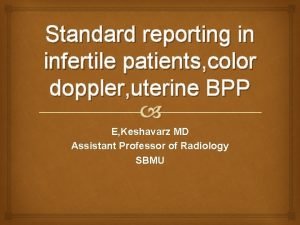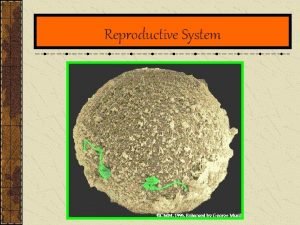Study of endocrine and follicular fluid protein expression


- Slides: 2


Study of endocrine and follicular fluid protein expression of PCOS patients in Taiwan n From 1997 to 2000, 160 blood samples(dog 114;cat 2;mouse 12;pigeon 17;goat 3;bat 1;wild boars 3 and flying squirrel 8 ) and 79 stool samples (dog 20;mouse 12;pigeon 30;guinea pig 3;goat 2;wild boars 4 and flying squirrel 8 ) were periodically collected from the animals lived with and hunted by the aboriginal tribes people of 5 villages in Taiwan (Nan Au village in Yi Lan county:Dung Au, Nan Au, Bi Hou, Jin Yue, Wu Ta, Jin Yang and Au Hau;Jin Feng village in Tai Dung county:Jeng Shing, Jia Lan, Shing, Bin Mau and Li Chiou;Hai Duan village in Tai Tung:Hai Duan, Kan Ding, Jia Na Wu Lu, Li Dau, Guang Yuan, Jin Ping and. Chu Lai;Da Jen village in Tai Tung:Tai Ban, Tu Ban, Shin Hua, An Shuo, Nan Tian, and Sen Yung;Da Wu village in Tai Tung:Shang Wu, Da Ju, Nan Shing, and Da Niau; coast mountain of Hua Lian county). The dog lived with people showed that the infection rates of Toxoplasma gondii, Dirofilaria immitis , Hepatazoon canis, Ancylostoma spp. , Toxocara canis and Trichuris vulpis are 21. 9%(25/114), 6. 1%(7/114), 1. 8%(2/114), 35. 0% (7/20), 20. 0%(4/20), and 5. 0%(1/20), respectively. Meanwhile, the Haemoproteus spp. of pigeon is 41. 2%(7/17) and the Babesia spp. of mouse is 41. 7%(5/12). About the mouse stood, it showed that the infection rates of Ancylostoma spp. , Strongyloides ratti and Diphyllobothrium spp. are 16. 7%(2/12), 25. 0%(3/12) , and 25. 0%(3/12) , respectively. Meanwhile the multi-infection rates of Strongyloides ratti and Diphyllobothrium spp. are 8. 3% (1/12), and 25. 0% (3/12). The Strongyloides papillosus of goat is 50. 0%(1/2). The Strongyloides ratti of guinea pig is 33. 3% (1/3). There were only 2 blood samples of wild boars and flying squirrel. The infection rates of both Toxoplasma gondii and Suifilaris suis of wild boars are 33. 3%(1/3). The total parasitic infection rate is 75. 0% and 100% in stool samples. The wild boars results showed that all the infection rates are 50. 0%(2/4) to Ascaris suum, Trichuris suis, Strongyloides ransomi and Hyostrongylus rubidus, except the Ascarops strongylina is 25. 0 %(1/4). The investigation of flying squirrel showed the infection rates of Trichuris spp. , Syphacia spp. , Coccidia spp. , Strongyloides ratti and Nippostrongylus muris are 25. 0%(2/8), 87. 5%(7/8), 75. 0%(6/8), 50. 0%(4/8), and 37. 8%(3/8), respectively. The 2, 3 and 4 multi- infection of wild boars are 25. 0%(1/4). The 2, 3 and 4 multi- infection of flying squirrel are 50. 0%(4/8), 25. 0%(2/8), and 25. 0%(2/8), receptively. In this investigation, the data is accumulated progressively and matched with the current study location and the main purpose is for establishing the animal' s parasitic data of aboriginal tribes' area in Taiwan and link to Geography Information System. Then the infectious disease, public health, epidemiology and epidemic situation of human and animal in aboriginal tribes could be monitored and controlled instantly and the hygiene education of the tribes could be improved and the parasite disease induced by other disease could also be reduced.



